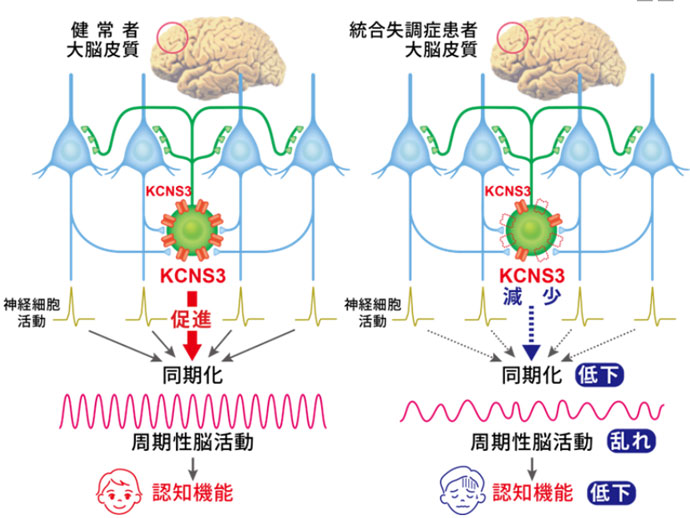新研究:KCNS3基因功能下降或导致精神分裂症
| 导读 |
目前,科学家对于精神分裂症的病因还没有彻底弄清。
现在,日本金泽大学等机构研究人员表示,一个与调节神经活动有关的基因功能出现下降可能是精... |

目前,科学家对于精神分裂症的病因还没有彻底弄清。
现在,日本金泽大学等机构研究人员表示,一个与调节神经活动有关的基因功能出现下降可能是精神分裂症的发病原因。这个发现有望促进研发治疗精神分裂症的新方法。相关研究论文刊登在了近期出版的《美国精神病学杂志》(American Journal of Psychiatry)上。
大脑中有一种特殊细胞负责调节周围神经细胞的活动,可以让神经细胞协调工作,有效处理信息。这种调节细胞中有一种由基因 KCNS3 指导合成的蛋白质,如果该基因功能下降,无法充分合成特定蛋白质,就会影响对周围神经细胞的协调,导致精神分裂症。
研究小组利用美国脑库内保存的脑组织,对来自精神分裂症患者和健康人的脑组织进行了对比,发现在精神分裂症患者大脑里的这种调节细胞内,KCNS3 基因的功能下降了 40。
研究人员表示,如果由于该基因功能下降,调节细胞中没有足够的由 KCNS3 基因指导合成的蛋白质,周围的神经细胞就会各自活动,导致信息处理变得非常混乱,而如果能逆转这个过程,通过让这种基因发挥作用,有可能促进开发出改善认知机能的治疗方法。(转化医学网360zhyx.com)
原文链接:
Lower Gene Expression for KCNS3 Potassium Channel Subunit in Parvalbumin-Containing Neurons in the Prefrontal Cortex in Schizophrenia
Objective
In schizophrenia, alterations in markers of cortical GABA neurotransmission are prominent in parvalbumin-containing neurons. Parvalbumin neurons selectively express KCNS3, the gene encoding the Kv9.3 potassium channel α-subunit. Kv9.3 subunits are present in voltage-gated potassium channels that contribute to the precise detection of coincident excitatory synaptic inputs to parvalbumin neurons. This distinctive feature of parvalbumin neurons appears important for the synchronization of cortical neural networks in γ-oscillations. Because impaired prefrontal cortical γ-oscillations are thought to underlie the cognitive impairments in schizophrenia, the authors investigated whether KCNS3 mRNA levels are altered in the prefrontal cortex of schizophrenia subjects.
Method
KCNS3 mRNA expression was evaluated by in situ hybridization in 22 matched pairs of schizophrenia and comparison subjects and by microarray analyses of pooled samples of individually dissected neurons that were labeled with Vicia villosa agglutinin (VVA), a parvalbumin neuron-selective marker, in a separate cohort of 14 pairs. Effects of chronic antipsychotic treatments on KCNS3 expression were tested in the prefrontal cortex of antipsychotic-exposed monkeys.
Results
By in situ hybridization, KCNS3 mRNA levels were 23% lower in schizophrenia subjects. At the cellular level, both KCNS3 mRNA-expressing neuron density and KCNS3 mRNA level per neuron were significantly lower. By microarray, KCNS3 mRNA levels were lower by 40% in VVA-labeled neurons from schizophrenia subjects. KCNS3 mRNA levels were not altered in antipsychotic-exposed monkeys.
Conclusions
These findings reveal lower KCNS3 expression in prefrontal cortical parvalbumin neurons in schizophrenia, providing a molecular basis for compromised detection of coincident synaptic inputs to parvalbumin neurons that could contribute to altered γ-oscillations and impaired cognition in schizophrenia.

来源:bio360
 腾讯登录
腾讯登录
还没有人评论,赶快抢个沙发